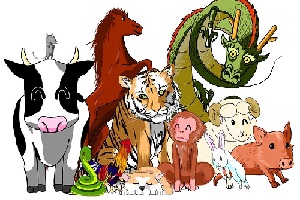Chinese culture believes that there are various milestones in life that closely reflects the age of a person.
Some of the most common ones that are still widely recognized today are the full moon, 100 days, etc.
Another one of which is the coming-of-age ceremony when a person reaches the age of 20 (for men) and 16 (for woman).

it is known as guan li (冠礼) for men and ji li (笄礼) for women. And in modern times, it is more associated with Confucianism than traditional Chinese customs.
It was believed that at a young age, an individual is given the protection of deities such as Guan Yin (观音), Ma Zu (妈祖) and Qi Niang (七娘), etc. But as the child who has slowly gone through the teenage years and now enters into adulthood, he or she would no longer enjoy the protection from the heavens.
As such, to continue reaping the blessings from the divine, adults would have to regularly worship the gods to express gratitude and ask for blessings.
This coming of age event does not necessarily have to take place on the 20th birthday. But have to be undertaken on an auspicious day in the 20th year of life.
Auspiciousness in this respect refers to the individual’s auspicious days.
This implies that a specific day might be auspicious for someone but inauspicious to someone else. Since the energy of each day comprises a heavenly stem and earthly branch, missing one particular day would mean having to wait 60 days before a suitable date arrives again.
However, when someone is unable to consult the expertise of a date selection expert, then this ceremony would usually be held on days with the ganzhi of:
- Jiazi
- Jiayin
- Bingzi
- Renzi
- Jiyou
One would simply need to refer to the sexagenary tables to find these pairs of elements.
The ceremony itself can be a simple low key affair. But that does not mean that it’s insignificant. After all, after the ceremony, an individual will be regarded as an adult and will be of marrying age.
An offering table is set up. Praying material and food items are displayed for the ritual. When the praying starts, the young man would change into 3 sets of clothings to signify the different phases of life. He would then be given a style name, or courtesy name.
Style names are part and parcel of Chinese culture in ancient times.
For example, Zhuge Liang of Red Cliff infamy has the style name of Kong Ming (孔明). Sun Tze from Art of War fame has the courtesy name Chang Qing (長卿). And Lao Tzu the founder of Taoism has the style name Bo Yang (伯陽).
This style name is given by a guest of honor who was invited to the ceremony. This can sometimes be a government official, a godfather, or even a benefactor, etc.
While the use of courtesy names are not commonly practiced these days, it should be noted that it was part and parcel of customs and tradition in the old days.
The coming of age ceremony is also mentioned in the Book of Rites (礼记) and Book of Etiquette and ceremony (仪礼).















